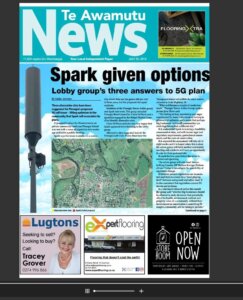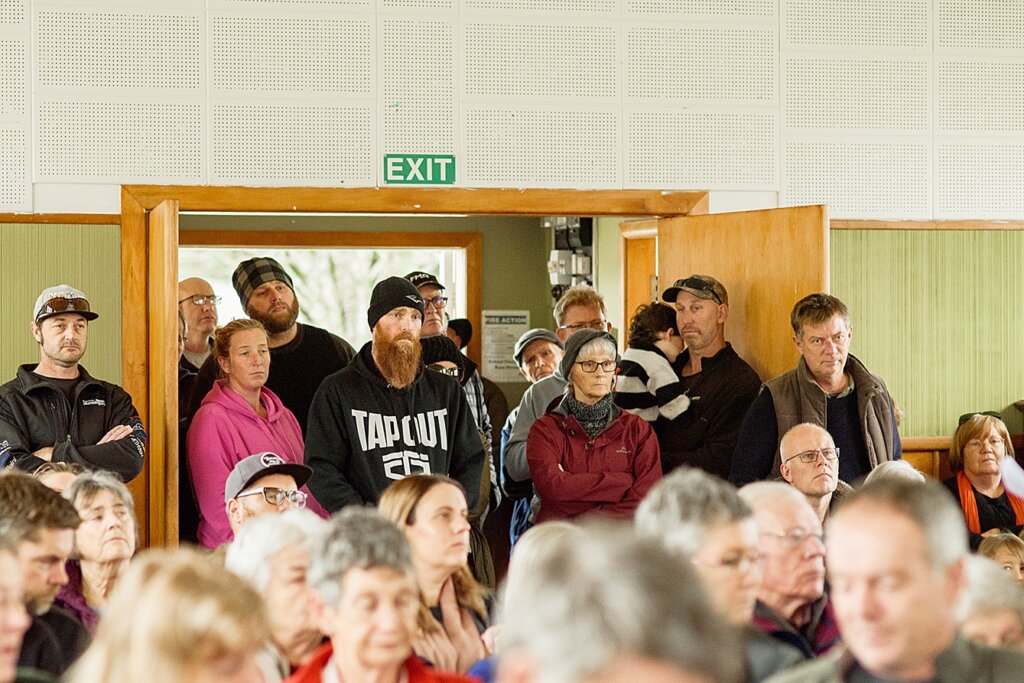Mobile tower infrastructure company Connexa has caught Pirongia residents on the hop by announcing a new cell tower will be erected in the town next month.
It will be at the same site which prompted a wave of protest in 2020, behind the Waitomo Service Station.
The tower will benefit customers of Spark, Skinny, Megatel and Mercury and is an upgrade from the single Spark cell site about 4km outside the village.
But residents have already reacted and a public meeting will be held at the Pirongia Community Centre on Crozier Street – today (Thursday) 6.30pm to discuss action.
“The construction of this new cell site represents a significant investment in the community‘s future, ensuring that Pirongia remains connected, resilient, and safe,” Connexa chief Rob Berrill said.
He said since 2019 the use of mobile services in Pirongia had grown by more than 30 per cent every year.
The existing site was “under significant strain”.
The Waitomo service station site was chosen after investigations into 14 other potential sites.

Clare St Pierre
Waipā councillor Clare St Pierre told The News she was made aware before Christmas that Connexa was looking to progress with plan.
The council previously assisted residents by funding a consultant to look at alternative sites – but it has no power to stop a cell tower being erected as long as it complies with District Plan rules and National Environmental Standards.
“Similar to electricity and roading, telecommunications infrastructure is now defined by the New Zealand government as ‘critical lifeline infrastructure’,” Berrill said.
St Pierre said she regretted the fact that more safeguards were not put in place to reflect the concerns of communities where towers were being built. Some distance rules had been established overseas, but that had not been picked up in New Zealand.
But she also believed Connexa had done its best to come up with a solution which would get the most community support, but it had only one ideal site.
The company this week delivered information packs to houses in the village which it said explained the process of deciding on the site location, the benefits the new site will deliver, and contact details.
But it may have overlooked what the one community group in the town understood was an agreement struck with Spark that they would be informed of progress.
In 2022 Spark sold the ‘passive’ components of its mobile network and Connexa now maintains components such as the pole, headframe, nuts, bolts, concrete foundation, and cabinets, and coordinates the building of new mobile infrastructure.
On Facebook it was evident the news had taken the community by surprise – some werepleased, others raised their fears of 5G. There were calls for a petition and a community meeting.

How we reported it – The News front page from July 26, 2019.
The cell tower site was not well received four years ago because it is close to Pirongia schools and other homes.
Lois Peter posted that she was involved in the process “of fighting this last time as our property is directly next to the proposed sight”.
She said there was a 300 metre “danger zone” around towers and children at the school would be within the zone.
Julia Wales posted she was “vehemently opposed”.
“There have been (deliberately in my view) no published studies done to determine the effects of such high electromagnetic frequency emitted by cell/5g towers, not even cell phones, on humans and animals, but the censored and vilified experts will state firmly that they are not safe,” she claimed.
“One only has to look at the alarming rise in cancers to at least be sceptical.”
Lilly Hoet was more upbeat, posting “5G here we come!”.
The Te Whatu Ora website, in a section on cell towers reports: “there is nothing unique to 5G that would make it interact differently with the body than other radiofrequency fields”.
In April 2020, then Prime Minister Jacinda Ardern condemned a conspiracy theory on social media which claimed 5G and coronavirus were linked.

Residents gathered on July 14, 2019 to discuss plans for the cell tower.









